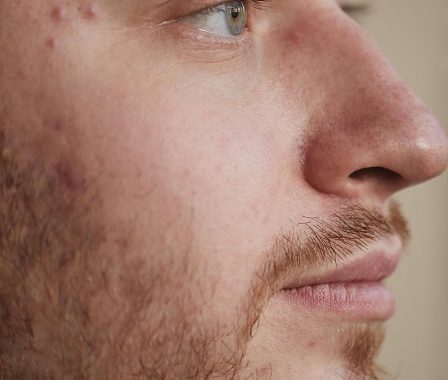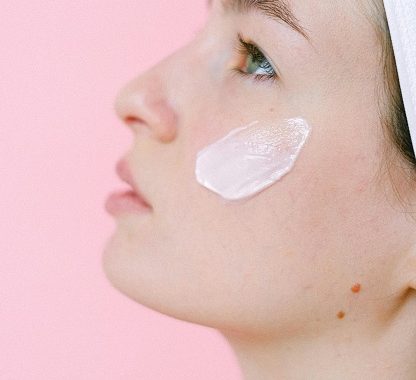
Are you on the quest for radiant, acne-free skin? Spironolactone might just be the solution you’re looking for. In this article, we’ll explore the ins and outs of using spironolactone for acne, addressing key questions such as dosage, duration, and potential side effects.
-
Spironolactone 101: Decoding its Role in Acne Treatment
Understanding how spironolactone works for acne is the first step towards unlocking its potential. This medication, primarily known for its diuretic properties, has gained popularity as an effective treatment for hormonal acne.
By targeting androgen receptors, spironolactone helps regulate hormonal imbalances, a common culprit behind persistent acne.
-
The Right Dose: Is 50 mg of Spironolactone Enough for Acne?
Determining the adequate dosage of spironolactone for acne is a critical aspect of its efficacy. The commonly prescribed 50 mg raises questions about its sufficiency.
Our exploration delves into the intricacies of spironolactone dosage, acknowledging the nuances of individual variations and the diverse factors that impact the medication’s effectiveness.
By dissecting the optimal dosage, we empower individuals with the knowledge needed to make informed decisions about their acne treatment, ensuring a nuanced understanding of how spironolactone can be tailored to meet unique needs.
-
Patience is Key: Timelines for Spironolactone’s Acne Results
Commencing a spironolactone regimen demands a steadfast commitment to patience, as the journey toward clear skin unfolds over a nuanced timeline. Short-term improvements may begin to surface within the initial few weeks, with some individuals experiencing a reduction in acne lesions and inflammation.
However, optimal and lasting results often necessitate an extended period, ranging from several weeks to a few months. The timeline for noticeable changes is contingent upon various factors, including the severity of the acne, individual response to the medication, and hormonal fluctuations.
This segment will meticulously outline these timelines, empowering users with a realistic outlook on the evolution of their skin health through the course of spironolactone treatment.
Best acne scar removal products
-
Battle of the Hormones: Spironolactone’s Impact on Hormonal Acne
Spironolactone emerges as a game-changer for individuals battling hormonal acne. This medication uniquely tackles acne triggered by hormonal imbalances. By inhibiting androgen receptors, spironolactone curtails excess oil production and reduces inflammation, addressing the root causes of hormonal acne.
Its targeted approach distinguishes it from conventional treatments, often proving effective where other remedies fall short.
Offering a reprieve for those who have struggled with traditional methods, spironolactone stands as a promising ally in the battle against hormonal acne, providing not just symptomatic relief but a holistic solution to achieve clearer, healthier skin.
Best acne scar removal products
-
Navigating Side Effects: Unveiling the Potential Downsides
Embarking on a journey to clearer skin with spironolactone for acne is a promising venture, but like any medical treatment, it comes with its share of potential drawbacks.
Understanding these side effects is crucial for individuals considering or currently using spironolactone. Let’s delve into the common side effects associated with this medication and explore strategies for effective management.
Common Side Effects: What to Anticipate
While spironolactone is generally well-tolerated, some users may experience side effects. Common among these are dizziness and lightheadedness, often attributed to the medication’s diuretic properties.
As spironolactone reduces fluid retention, blood pressure may drop, leading to these sensations. Additionally, users may notice an increase in urination, particularly during the initial stages of treatment.
Breast tenderness or enlargement may also occur due to spironolactone’s anti-androgen effects.
Managing Dizziness and Lightheadedness: Practical Solutions
Dizziness and lightheadedness can be managed through simple yet effective measures. It’s recommended to rise slowly from a sitting or lying position, giving your body time to adjust to changes in posture.
Staying hydrated is crucial, as dehydration can exacerbate these symptoms. If persistent, consulting with a healthcare professional is essential to rule out any underlying concerns.
Addressing Increased Urination: Hydration and Timing Matter
Frequent urination is a common early side effect of spironolactone. However, staying well-hydrated can help mitigate this issue. It’s advisable to consume fluids earlier in the day and reduce intake closer to bedtime to minimize disruptions to sleep.
Additionally, scheduling bathroom breaks during waking hours can help manage this side effect without significant inconvenience.
Breast Tenderness and Enlargement: When to Seek Guidance
Spironolactone’s anti-androgen effects can lead to breast tenderness or enlargement in some individuals. While this side effect is generally temporary and reversible upon discontinuation, it’s crucial to communicate any concerns with a healthcare professional.
They can provide guidance on whether the side effect is within the normal range or requires adjustments to the treatment plan.
Conclusion: Informed Decision-Making for Clearer Skin
Navigating the potential side effects of spironolactone for acne requires a proactive approach. By understanding what to anticipate and adopting practical strategies for management, individuals can make informed decisions about their treatment journey.
Open communication with healthcare providers is key, ensuring that any concerns or side effects are addressed promptly. Ultimately, with the right knowledge and guidance, the path to clearer skin with spironolactone can be both effective and well-managed.
Best acne scar removal products
-
Fluid Retention Concerns: How Long Does it Take for Spironolactone to Work?
Fluid retention, medically known as edema, is a condition where excess fluid accumulates in body tissues, leading to swelling. While spironolactone is renowned for its efficacy in treating acne, its ability to address fluid retention is equally noteworthy. In this section, we’ll delve into the intricacies of how long it takes for spironolactone to work on fluid retention and what users can expect during this process.
Understanding the Mechanism:
Spironolactone is classified as a potassium-sparing diuretic, a type of medication that helps the body expel excess sodium and water while retaining potassium. This mechanism is particularly beneficial for individuals experiencing fluid retention, a common symptom associated with various medical conditions such as heart failure, liver disease, and kidney disorders. By modulating the balance of these electrolytes, spironolactone effectively combats fluid buildup.
Timeline for Fluid Retention Relief:
The timeline for experiencing relief from fluid retention symptoms with spironolactone can vary from person to person. Typically, users may start to notice a reduction in swelling within a few days to a week after initiating treatment. However, for optimal results, it’s essential to adhere to the prescribed dosage and regimen consistently.
Factors Influencing the Timeline:
Several factors can influence how quickly spironolactone alleviates fluid retention. These include the severity of the condition, the underlying cause of edema, and individual variations in response to the medication. In cases of mild to moderate fluid retention, individuals may observe quicker results compared to those with more severe conditions.
Balancing Act: Acne and Fluid Retention Dual Treatment:
One of the unique aspects of spironolactone is its dual functionality in treating acne and fluid retention. For individuals prescribed spironolactone for both concerns, the timeline for acne improvement may align with or differ from that of fluid retention relief. This dual-purpose makes spironolactone a versatile option for those seeking comprehensive skin and fluid management.
Cautionary Considerations:
While spironolactone is generally well-tolerated, it’s crucial to be aware of potential side effects, particularly when addressing fluid retention. Monitoring potassium levels and staying hydrated are essential precautions to prevent complications.
In conclusion, navigating spironolactone’s impact on fluid retention involves understanding the medication’s mechanism, recognizing individual variations, and maintaining consistency in treatment. Whether you’re exploring spironolactone for acne, fluid retention, or both, this article aims to empower you with the knowledge needed for a well-informed journey to healthier, acne-free skin and effective fluid management. Always consult with a healthcare professional for personalized advice and guidance.
Best acne scar removal products
Further Reading:
How Spironolactone Helps Hormonal Acne
Oral Spironolactone in Post-teenage Female PatientsTop of Form
FAQs:
How fast does spironolactone work acne?
Spironolactone’s impact on acne varies, but noticeable improvements may begin within a few weeks to months of consistent use. The medication, primarily effective for hormonal acne, helps regulate androgens, reducing breakouts. Factors like individual response, dosage, and the severity of acne can influence the speed of results. While some experience quicker changes, others may require more time for spironolactone to demonstrate its full effectiveness. Regular communication with a healthcare professional is essential for monitoring progress and adjusting treatment as needed.
�
Can spironolactone just stop working for acne?
Yes, spironolactone’s effectiveness for acne can diminish over time due to factors such as hormonal changes, dosage adjustments, or the development of resistance. Some individuals may experience a plateau in acne improvement, necessitating a reassessment of treatment plans. Consulting with a healthcare professional is crucial to explore alternative solutions or adjustments to maintain optimal results in managing acne with spironolactone.
�
How do you know if spironolactone is effective?
To gauge the effectiveness of spironolactone, monitor improvements in targeted symptoms. For acne, observe reduced breakouts, diminished oiliness, and improved skin texture over weeks to months. In the case of fluid retention, look for a decrease in swelling and enhanced comfort, typically noticeable within days to weeks. Regular follow-ups with a healthcare provider are essential to assess progress, adjust dosage if necessary, and address any concerns. Keep in mind that individual responses may vary, and patience is key when evaluating spironolactone’s effectiveness. Always consult your healthcare professional for personalized guidance.
�
Is there acne purging on spironolactone?
Yes, acne purging can occur when starting spironolactone. As the medication regulates hormones and addresses acne from within, it may initially cause a temporary exacerbation of existing acne. This purging phase typically lasts a few weeks as the skin adjusts to the hormonal changes. It’s essential to stay consistent with the prescribed dosage and skincare routine during this period, as long-term benefits often follow the initial purging stage. If concerns persist, consulting with a healthcare professional can provide personalized guidance.
�
How long for spironolactone to work for acne reddit?
Results from Spironolactone for acne on Reddit vary, but many users report seeing improvements within a few weeks to a few months. Some notice changes in acne severity, while others highlight enhanced skin texture and reduced breakouts. Individual responses may depend on factors such as dosage, skin type, and the specific hormonal factors triggering acne. It’s crucial to be patient and consistent with the prescribed regimen while monitoring any potential side effects. Keep in mind that personal experiences shared on Reddit should complement, not replace, professional medical advice.



